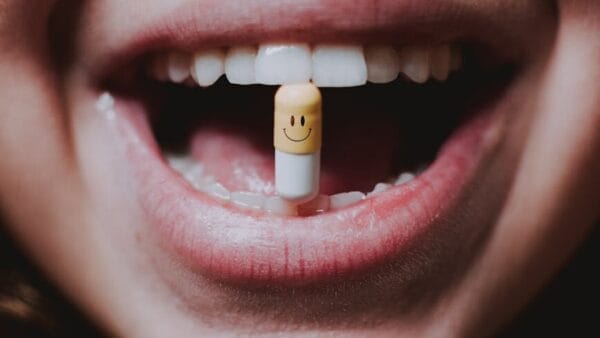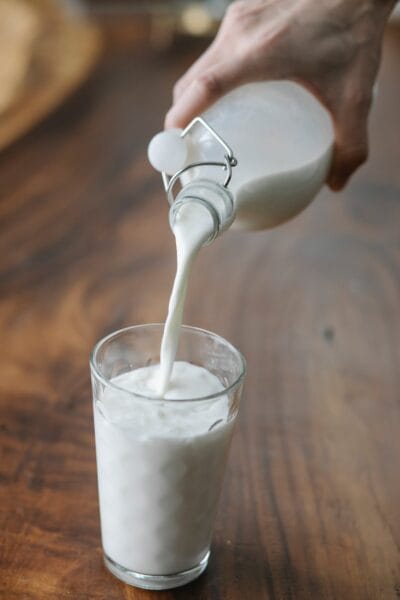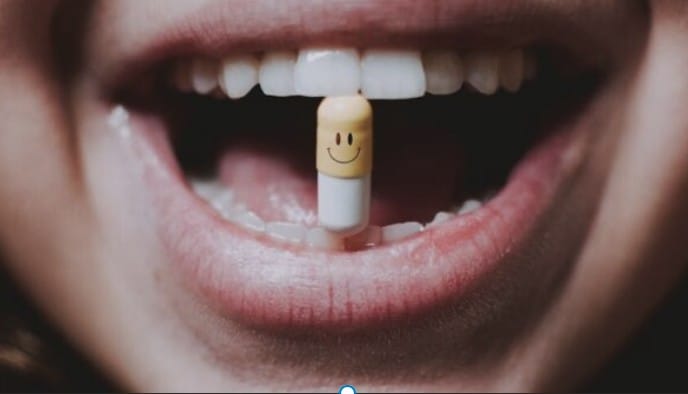For millions of people, Doxycycline is a lifeline, offering a proven pathway to clear skin and restored confidence. I’ve had on and off bouts with acne, and my dermatologist always defaults to this antibiotic.
For most, Dermatologists frequently prescribe this oral antibiotic, typically at a low dose of 100mg per day, to combat inflammatory acne. It works by targeting the P. acnes bacteria and, perhaps more importantly, acting as a powerful anti-inflammatory agent.
But the success of Doxycycline often comes with a trade-off.
Doxycycline Clears Acne at Cost to Gut Health
While the face clears up, the body’s internal ecosystem—the gut microbiome—takes a hit.
You may have heard that antibiotics are non-selective, but how much damage can a low, long-term dose truly inflict?
Let’s start with a recap of the research behind this post (more at the bottom):
The Research Summary
- Probiotics and Doxycycline: In this double-blind study, probiotics helped in reducing inflammation and modulating immune response via the gut–brain–skin axis.1
- Doxycycline in the gut: It addresses concerns about declining eradication rates and rising antibiotic resistance, prompting exploration of alternative therapies.2
The Broad-Spectrum Cost: Why 100mg is Enough to Cause Dysbiosis
Doxycycline belongs to the tetracycline class of antibiotics. The key issue with Doxycycline, even at a lower dose used for acne, is that it is broad-spectrum.
This means it doesn’t just target the specific bacteria causing inflammation on your skin; it wages war against a wide range of bacteria throughout your body, including the trillions of microorganisms residing in your digestive tract.
Long Life of this Antibiotic

The typical dosage for acne is 50mg to 100mg, often prescribed for months at a time. Many people assume this low dose is gentler on the gut than the much higher doses used for acute infections. Unfortunately, this isn’t entirely true.
The impact isn’t necessarily about the severity of the initial dose; it’s about the duration of exposure and the antibiotic’s mechanism of action.
Doxycycline’s long half-life means it remains active in your system for an extended period, continuously suppressing the growth of both harmful and beneficial bacteria.
Imbalance in Gut Microbiome
This prolonged disruption leads to dysbiosis: an imbalance in the gut microbiome characterized by:
- Loss of Diversity: A major reduction in the sheer variety of bacterial species. Diversity is the hallmark of a resilient, healthy gut.
- Overgrowth of Pathogens: The elimination of beneficial bacteria creates open real estate for opportunistic, harmful species (like C. difficile or various yeasts) to colonize.
- Reduced SCFA Production: Damage to fiber-fermenting bacteria reduces the production of Short-Chain Fatty Acids (SCFAs) like butyrate, which are crucial for feeding colon cells and maintaining the integrity of the gut lining.
The side effects are common and include bloating, digestive discomfort, and, most notably, an increased risk of antibiotic-associated diarrhea (AAD) and yeast infections.
Strategy 1: The Probiotic Shield and the Crucial Timing Rule
When using a broad-spectrum antibiotic, the goal is not to stop the inevitable bacterial kill-off, but to use targeted intervention to minimize collateral damage and restore balance immediately. This is where probiotics become essential.
Actionable Rule: The 4-Hour Separation

The single most important rule for probiotic use during Doxycycline treatment is timing. If you take your probiotic too close to your Doxycycline dose, the antibiotic will simply kill the probiotic bacteria, wasting your supplement and effort.
- If you take Doxycycline in the morning: Take your probiotic at night, at least 4 hours later.
- If you take Doxycycline twice daily: Place the probiotic dose exactly in the middle of the two antibiotic doses (e.g., Doxy at 8 AM, Probiotic at 2 PM, Doxy at 8 PM).
Targeted Probiotic Strains

While a high-quality, diverse multi-strain probiotic is a good baseline, research suggests prioritizing certain strains during antibiotic treatment:
1. Saccharomyces boulardii (S. boulardii)
This is a beneficial yeast, not a bacterium. Because Doxycycline is an antibacterial agent, it does not kill S. boulardii. This makes it an invaluable ally.
- Role: S. boulardii actively competes with pathogens like C. difficile and is highly effective at preventing and reducing antibiotic-associated diarrhea (AAD) and yeast overgrowth.
- Dose: Aim for 250–500mg daily.
2. Multi-Strain Lactobacillus and Bifidobacterium Formulas
These are the core bacteria crucial for gut function. Taking them separately from the antibiotic allows them to temporarily colonize the gut and offer protective effects, even if their numbers fluctuate due to the Doxycycline.
- Focus: Look for formulas with high colony-forming units (CFUs) in the 10–50 billion range, specifically containing well-studied strains like Lactobacillus rhamnosus GG and various Bifidobacterium species.
Strategy 2: Prebiotic Support and Repairing the Gut Barrier
While probiotics help re-seed the gut, prebiotics—the non-digestible fibers that feed beneficial bacteria—help the remaining and incoming bacteria survive and thrive. You must feed the army you are sending in.
Dietary Focus: High-Fiber, Diverse Foods

The goal is to increase dietary fiber, as this is the primary substrate for SCFA production. SCFAs are vital for healing the intestinal lining, which often becomes more permeable during long-term antibiotic use.
- Resistant Starch: Incorporate sources like cooled white potatoes, green bananas, and oats. These starches “resist” digestion in the small intestine and make it all the way to the large intestine to feed the good bacteria.
- FOS & Inulin: Foods rich in these fibers, such as garlic, onions, leeks, and asparagus, are excellent prebiotic boosters.
- Fermented Foods: While store-bought fermented foods like sauerkraut and kimchi may contain probiotics, their primary role here is to provide a nutrient-dense food source to support your natural microbial population.
Supplementing for Gut Barrier Integrity
Consider adding specific supplements that target the gut lining (often called the gut barrier):
- L-Glutamine: This amino acid is the preferred fuel source for the cells lining the small intestine (enterocytes). Supplementing with 5-10g per day can help repair damage and strengthen the “tight junctions” that prevent leaky gut.
- Bone Broth: Rich in collagen, gelatin, and amino acids, bone broth offers supportive building blocks that can help soothe and repair the mucosal lining of the GI tract.

The Complete Approach to Acne and Gut Health
The long-term goal of treating acne is clear skin, but the long-term goal of optimal health must include a robust gut.You do not have to choose one over the other. By implementing a diligent, timely probiotic regimen (especially using S. boulardii and multi-strain formulas) and consciously prioritizing prebiotic-rich foods, you can navigate the Doxycycline dilemma successfully.
This proactive, science-backed approach ensures you minimize the collateral damage of the antibiotic, maintain a resilient gut ecosystem, and ultimately support your overall health while you enjoy your results.
Hey, thanks for reading!
If you appreciated this article drop me a comment below.
Footnotes
- Published in Journal of Cosmetic Dermatology. Adding probiotics to doxycycline is safe and may enhance acne treatment—especially for facial areas like the forehead, chin, and nose. The study encourages personalized, combination-based approaches to acne care. Evaluating the Effectiveness of Probiotic Supplementation in Combination With Doxycycline for the Treatment of Moderate Acne: A Randomized Double-Blind Controlled Clinical Trial. In this randomized controlled clinical trial, 80 patients with moderate acne were divided into two groups of 40. All patients received the same topical treatment, which consisted of a daily antibacterial face wash and Adapalene gel every other night. The control group received one capsule of doxycycline (100 mg) daily, whereas the intervention group received one probiotic capsule daily in addition to doxycycline. Patients underwent photography of facial acne lesions, and treatment response was assessed using the global acne grading system (GAGS) and acne grading method at baseline, as well as during follow-up visits at 1, 2, and 3 months. https://onlinelibrary.wiley.com/doi/full/10.1111/jocd.16614 ↩︎
- Helicobacter pylori (H. pylori) is a spiral-shaped bacterium that infects the lining of the stomach and the upper part of the small intestine (duodenum). Doxycycline and minocycline in Helicobacter pylori treatment: A systematic review and meta‐analysis – Zhao – 2021 – Helicobacter – Wiley Online Library ↩︎
